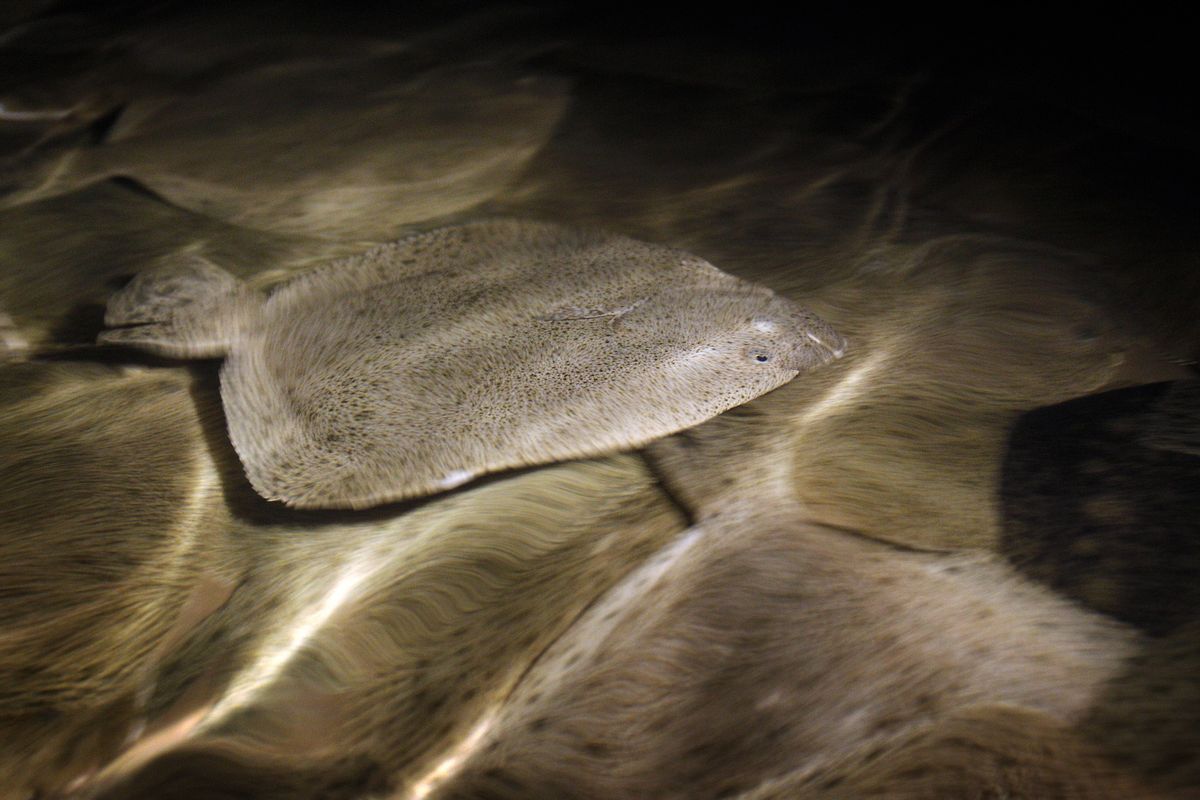Fish farmer designs eight-story tank
Unique method solves many industry problems

“I knew 20 years ago there is an end. When you keep fishing like this, the North Sea will be empty,” he says.
When he started out, Bout knew nothing about aquaculture.
Turning to neighbors and books for advice, he ran into headaches that plague enclosed farms like his: The fish suffered disease epidemics, he spent a fortune on energy to pump and heat water in his tanks, and he had to dispose of the fish waste without befouling the surrounding area.
“We did everything by the book. But the books were wrong,” he said.
Bout, 55, represents a pioneering breed in an industry seen as increasingly crucial to the world’s need for food stability while the oceans’ capabilities are dwindling. And as the crisis of the oceans becomes clearer, the term “sustainable farming” is gaining as much resonance for the sea as for land – and is just as difficult to achieve.
Nearly half the fresh and sea water fish on the market is grown in cages along coasts, in lakes, or in tanks on land – some of them inside factory-like buildings with gleaming silver pipes and whirring water pumps.
In the West, aquaculture is the new agribusiness. In 35 years, it has grown from a tiny specialty of small farmers to a largely corporate-controlled 52 million-ton industry worth nearly $100 billion in 2008, the last year for which the U.N. Food and Agriculture Organization has figures. The FAO says the world will need another 30 million tons a year within 20 years.
But it comes at an environmental cost. As the global business exploded in the 1970s, coastlines and mangrove forests were destroyed to make way for open sea cages, and the waste dirtied the waters for miles around. Some fish would escape, spreading pathogens and weakened genes among wild populations.
Like industrially grown cattle or chickens, some fish were raised in overcrowded and filthy tanks, wallowing in their own feces. Whether raised on land or at sea, the fish were dosed up with antibiotics against diseases rampant in unsanitary conditions.
Bout was unusual in his willingness to lose vast sums of money with his trial-and-error methods – killing tens of thousands of fish in the process.
Three years ago he took his turbot out of the standard 3-feet-deep square concrete tank and put them in his experimental eight-tiered system. Each tier is a U-shaped fiberglass “raceway” 210 feet long with 6 inches of water and a swift current that sweeps away excrement and uneaten food pellets.
Bout uses gravity to circulate the water eight times an hour – traditional farms change water once hourly – running it through cleansing filters each time it drops to the level below. He says his electricity costs are one-quarter of a similarly sized farm that uses standard tanks.
He also doesn’t let organic waste go to waste. While other farms flush water back into the sea laden with untreated feces, he oxidizes it for plant fertilizer or food for shellfish.
He discovered that disease-spreading bacteria thrive in water above 61.7 degrees Fahrenheit, a temperature turbot can tolerate but is too cold for other ocean fish like bass or bream, which he once raised but abandoned. The fish grow more slowly in cool water but are free of disease, and Bout says he has not used medication for eight years. He also found that with cleaner water the fish ate less, but grew faster.
“Don’t ask me why,” he shrugged in an interview at Seafarm, his installation above the Oosterschelde estuary in southern Netherlands. His next project is raising sole, finding a profitable formula. “You can think about sustainability. But you have to make money,” he says.
Bout “is exceptional … an innovative thinker,” says Margreet van Vilsteren of the North Sea Foundation, which assesses the ecological impact of fish farms around the world. “The last step, I think, that has to be taken is to control the food that is given to the fish.”
Turbots, sold more commonly in restaurants than for home consumption, are flat, bottom-hugging saltwater fish that, when not feeding or agitated, lie still, clustered on top of each other, stirring only occasionally.
His system does not work for other kinds of saltwater fish in tanks, which require warmer water to grow. Nor can it be used for salmon, the most popular farmed marine animal, and other fish like cod, which are raised in open net systems in the sea.
But new methods are continually being developed. Not long ago, salmon were raised in densely packed cages and heavily medicated. Now, vaccines administered individually to young fish have cut the need for antibiotics by 90 percent.
Producers also have learned that reducing the density in the nets lowers stress.